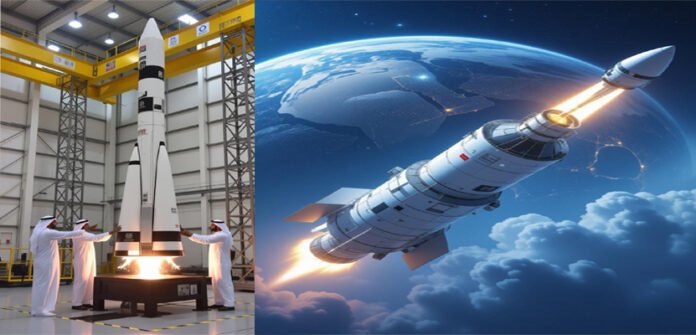In a defining moment for Arab space exploration, the United Arab Emirates (UAE) has successfully built and test-fired its first homegrown liquid-fuel rocket engine, taking a significant leap toward developing indigenous space launch capabilities.
The test, conducted by the Technology Innovation Institute (TII) in Abu Dhabi, marks the first time a Gulf nation has designed, manufactured, and tested a liquid-fuel rocket engine completely within its borders.
🌍 A Giant Leap for the Arab World
This achievement reinforces the UAE’s growing reputation as a leader in science and innovation in the Middle East.
Dr. Rayda Al Nuaimi, lead propulsion engineer at TII, proudly declared:
“This successful test confirms that the UAE is no longer just a participant in global space efforts — we are becoming a technology creator.”
The engine, which uses a combination of liquid oxygen and refined kerosene, achieved stable combustion and thrust parameters during its initial test run, paving the way for the development of small satellite launch vehicles (SSLVs) in the coming years.
🧪 Inside the Breakthrough
According to TII’s official statement, the engine is a modular design capable of delivering between 25 to 35 kilonewtons of thrust. Built using 3D-printed titanium alloy components, it reflects a high level of local engineering capability.
Dr. Faisal Al Bannai, Secretary General of the Advanced Technology Research Council, said:
“Our ambition is to make the UAE self-reliant in access to space. This test brings us one step closer to launching satellites from Emirati soil.”
The test was carried out at a secure desert facility near Al Ain, where engineers monitored real-time performance metrics, including thrust duration, fuel efficiency, and thermal stability.
🌌 Building on a Stellar Space Legacy
The UAE’s space program has seen remarkable progress in less than a decade. From the successful Hope Probe mission to Mars in 2021 to astronaut Sultan Al Neyadi’s six-month ISS mission in 2023, the nation has been steadily building a robust aerospace ecosystem.
This new rocket engine represents the next frontier — developing launch independence, reducing reliance on foreign rockets, and boosting the domestic space economy.
“Every great spacefaring nation began with a single engine test,” said Dr. Sarah Al Amiri, UAE’s Minister of State for Public Education and Advanced Technology.
“Today, we take that first step for the UAE — and for the entire Arab world.”
💡 Strategic Vision 2031: Space Innovation as a Growth Engine
The liquid-fuel rocket project aligns with the UAE’s Space Strategy 2031, which focuses on research, manufacturing, and commercial space ventures. The government aims to make the UAE a regional hub for satellite launches by the early 2030s.
Economists say this could open up billions in investment opportunities. The UAE’s space sector already contributes over $400 million annually to GDP, a figure expected to triple once launch operations commence.
Dr. Al Nuaimi added:
“This is not just a technological achievement — it’s an economic one. We are creating new industries, new jobs, and a new vision for future generations.”
🌠 What’s Next
Following the successful static fire test, the team will proceed with long-duration and vacuum simulation tests before integrating the engine into a suborbital demonstrator rocket. The first test flight is expected in late 2026.
The UAE’s achievement is being hailed internationally as a turning point for regional innovation — one that could inspire other Middle Eastern countries to invest in advanced space technologies.
















